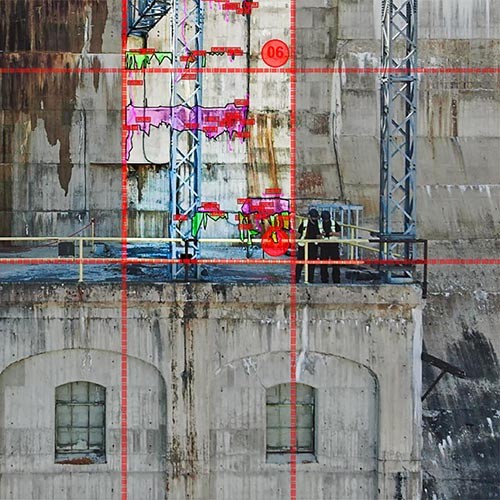
Drone Inspections
Drone inspections represent a significant technological advancement in monitoring and evaluating the condition of infrastructure, equipment, and large areas, offering numerous benefits over traditional manual inspection methods. Here are the key technological benefits of using drones for inspections:
- Enhanced Safety: Drones allow inspections of potentially hazardous areas, such as high-voltage power lines, tall structures, and toxic environments, without putting human inspectors at risk. This drastically reduces the likelihood of accidents and injuries associated with working at heights or in dangerous conditions.
- Improved Efficiency: Drones can cover large areas quickly and access difficult-to-reach locations with ease, significantly speeding up the inspection process. This is particularly beneficial for inspecting extensive infrastructure networks like pipelines, railways, and power lines, where manual inspections would be time-consuming and labor-intensive.
- High-Quality Data Capture: Equipped with high-resolution cameras and advanced sensors, drones can capture detailed images and videos, providing high-quality data for inspection and analysis. This includes thermal imaging to detect heat anomalies, LiDAR for accurate 3D modeling, and multispectral imaging for assessing vegetation and environmental conditions.
- Cost Reduction: Drone inspections can be more cost-effective than traditional methods that often require scaffolding, specialized equipment, and large crews. By reducing the manpower and equipment needed for inspections, drones can significantly lower overall inspection costs.
- Real-Time Monitoring and Analysis: Some drones offer the capability to stream data in real-time, enabling immediate assessment and decision-making. This is particularly useful in emergency situations, such as monitoring natural disasters or structural failures, where quick responses are crucial.
- Accessibility to Challenging Environments: Drones can easily access and inspect areas that are challenging or impossible for humans to reach, including tall structures, confined spaces, and remote locations. This ensures comprehensive inspections without the logistical complexities and risks associated with manual access.
- Automated and Repeatable Inspections: Advanced drones can be programmed to follow precise flight paths, ensuring consistent and repeatable inspections over time. This is invaluable for monitoring changes or deterioration in structures or environments, enabling accurate trend analysis and predictive maintenance.
- Integration with Advanced Data Analysis Tools: The data collected by drones can be integrated with software platforms that utilize AI and machine learning algorithms to automatically analyze images and detect issues such as cracks, corrosion, or other defects. This speeds up the inspection process and improves accuracy by reducing human error.
- Reduced Environmental Impact: Drone inspections have a minimal environmental footprint, especially compared to traditional methods that may involve heavy machinery or disruption to sensitive ecosystems. This makes drones an environmentally friendly option for inspections in conservation areas or locations with vulnerable wildlife.
- Enhanced Documentation and Compliance: Drones provide detailed records of inspections through high-resolution images and videos, aiding in documentation and compliance with regulatory requirements. This digital trail is crucial for audit purposes and long-term monitoring of infrastructure health.
In summary, drone inspections offer a blend of safety, efficiency, and data quality that significantly enhances the capability to monitor and maintain infrastructure, equipment, and environmental conditions across various industries.


0 comments